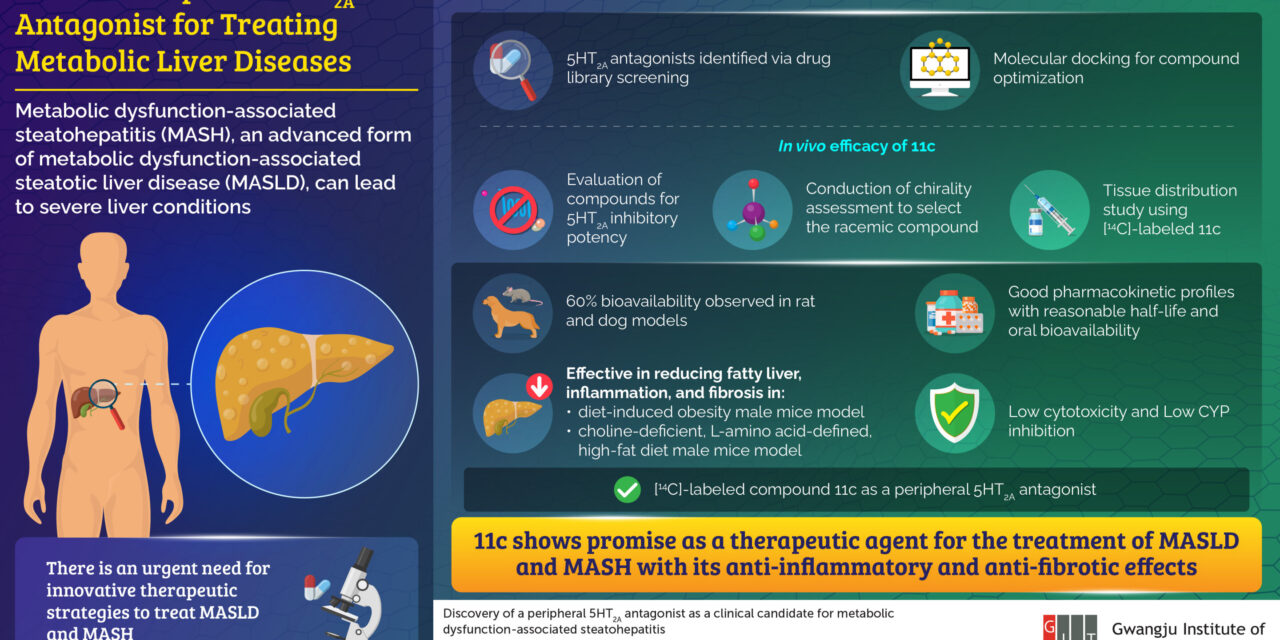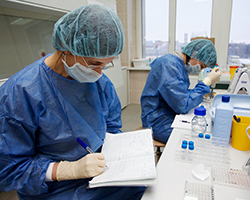A groundbreaking study published in Nature Communications unveils a promising development in the treatment of metabolic dysfunction-associated steatotic liver disease (MASLD) and metabolic dysfunction-associated steatohepatitis (MASH). Led by Prof. Jin Hee Ahn from the Gwangju Institute of Science and Technology (GIST), researchers have introduced compound 11c—a novel peripheral 5HT2A antagonist—as a potential therapeutic breakthrough for these burgeoning global health concerns.
MASLD, characterized by fat accumulation in the liver, poses a significant threat to public health, escalating the burden on healthcare resources worldwide. Left untreated, MASLD can progress to more severe conditions like MASH, marked by inflammation, ballooning, and fibrosis. Addressing the urgent need for effective treatments, Prof. Ahn and his team embarked on a mission to develop a novel therapeutic agent.
The study, available online since January 20, 2024, showcases the remarkable efficacy of compound 11c in preclinical models, positioning it as a frontrunner in the quest for innovative treatments. Dr. Haushabhau Shivaji Pagire, the first author and senior researcher at GIST’s Medicinal Chemistry Laboratory, notes, “Our meticulous analyses have revealed a significant reduction in inflammatory and fibrosis markers, demonstrating the potent anti-inflammatory and fibrotic effect of the compound—a promising step forward in treating MASH.”
The journey to discovering compound 11c involved the transformation of Desloratadine—a peripheral agent showing promising inhibitory effects—into the potent compound through molecular docking techniques. With robust biological activity and a favorable safety profile, compound 11c emerges as a compelling candidate for treating MASLD and MASH.
Prof. Ahn emphasizes, “Based on in vitro and in vivo efficacy, tissue distribution data, drug metabolism and pharmacokinetics (DMPK), and toxicity profiles, compound 11c shows promise as a therapeutic agent.”
Furthermore, compound 11c exhibits excellent safety attributes, including hepatocyte and plasma stability, minimal cytotoxicity, and low cytochrome P450 inhibition. Its pharmacokinetic properties, boasting over 60% oral bioavailability, position it as a promising oral treatment for MASH.
With obesity-associated MASH ranking as the third leading cause of liver transplantation, compound 11c holds profound implications for liver disease management. As the research advances to Phase I clinical trials, anticipation grows for insights into its performance in humans—a potential game-changer in the treatment landscape for metabolic disorders.
The successful outcome of these trials could herald a paradigm shift in the management of metabolic liver disorders, offering hope for millions worldwide.
For more details on the study, refer to the publication titled “Discovery of a peripheral 5HT2A antagonist as a clinical candidate for metabolic dysfunction-associated steatohepatitis” in Nature Communications.












